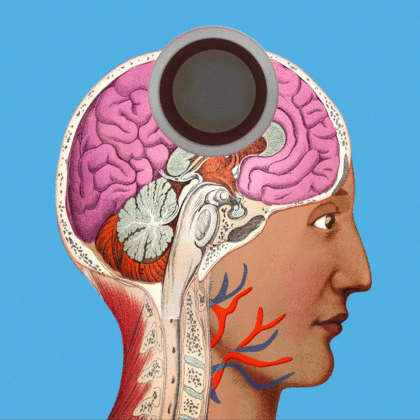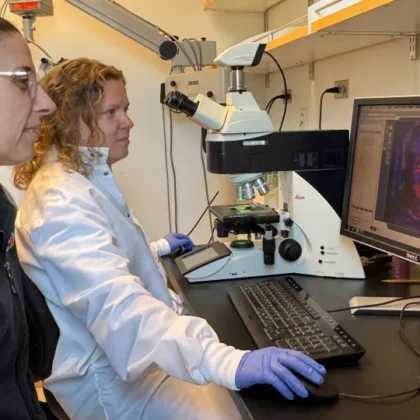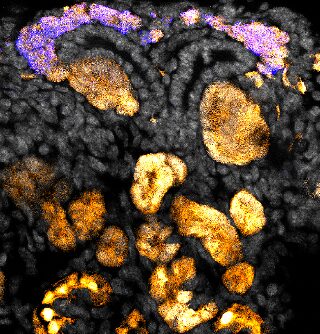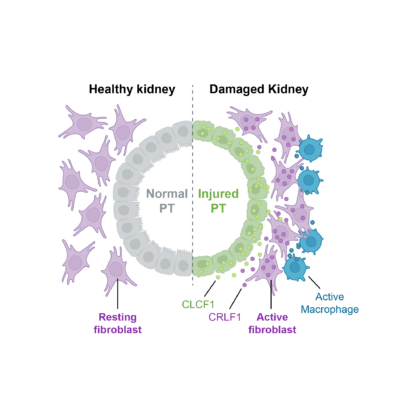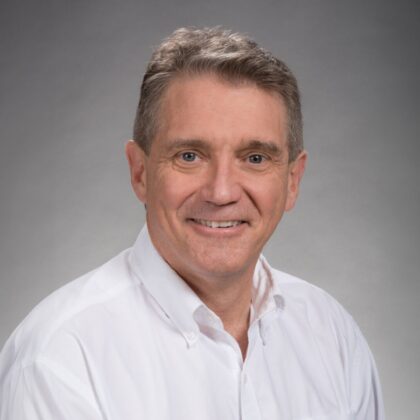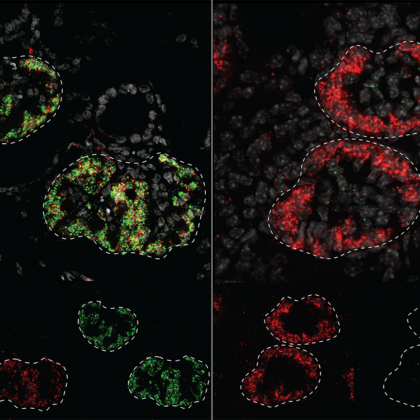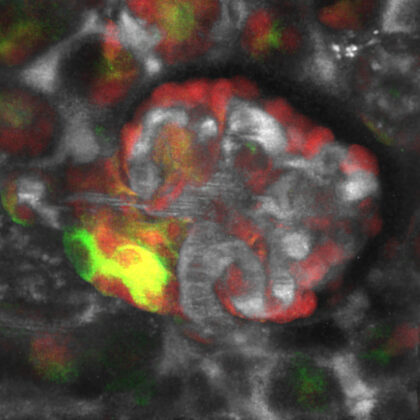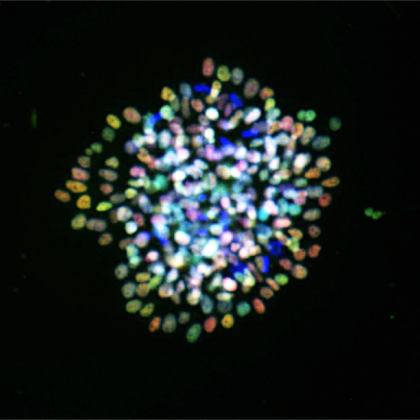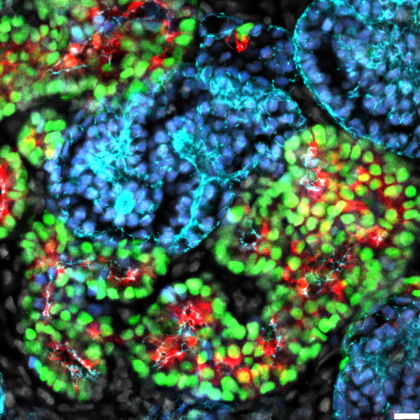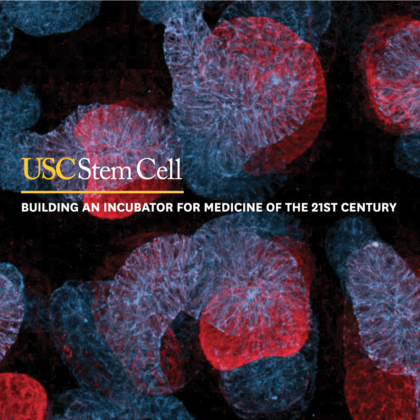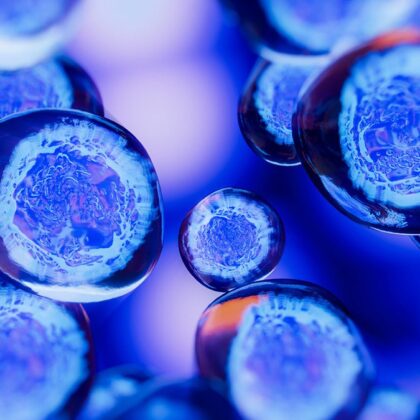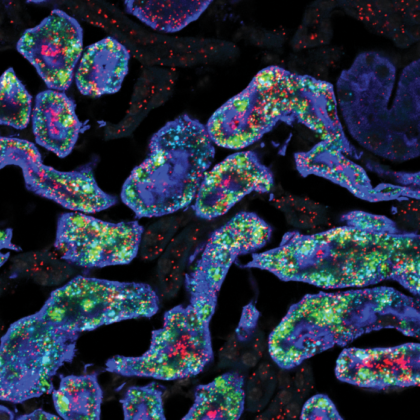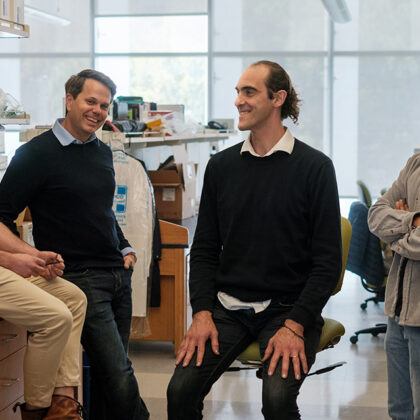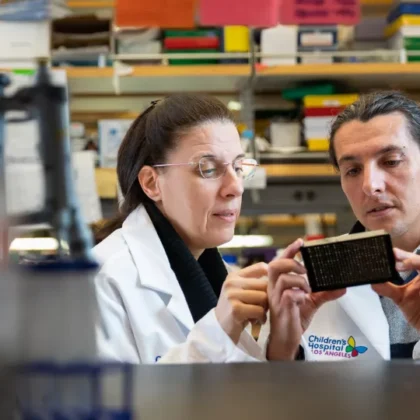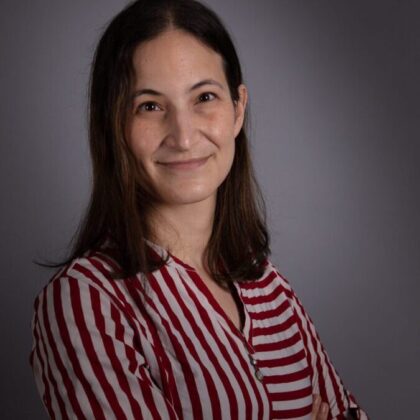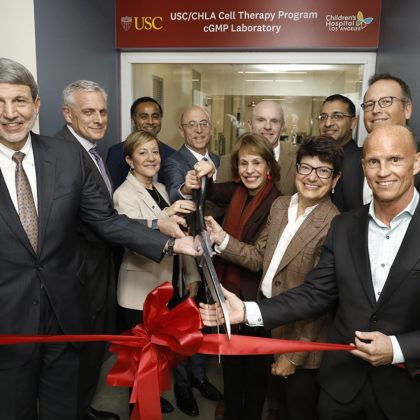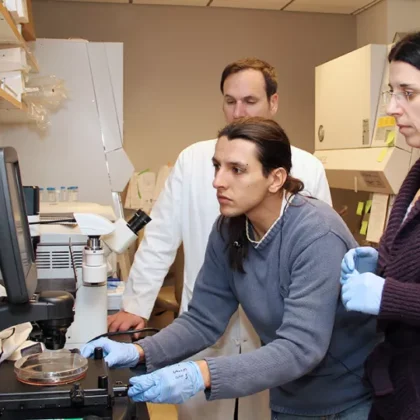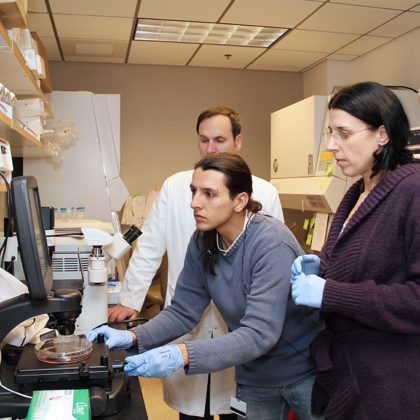Cell by cell: Rebuilding the body
USC researchers are revolutionizing how we treat disease by harnessing stem cells as “living medicine.” Anyone who’s healed from a cut or a scrape has witnessed the incredible regenerative power of stem …
Fasting-mimicking diet restores kidney function in study
Diet intervention revives kidney function in preclinical animal models and in patients with chronic kidney disease. In patients with chronic kidney disease, the loss of podocytes—part of the kidney’s glomerular filtration barrier—causes …
Wnt happens in kidney development?
A pair of USC Stem Cell mouse studies detail how progenitor cells self-renew, differentiate, and aggregate into early kidney structures, offering insights for the creation of stem cell-based artificial kidneys. A group …
New study shows cells get involved in unhealthy relationships after acute kidney injury (AKI) in mice
Using cutting-edge technology, researchers at USC and Caltech develop a comprehensive map of cellular, molecular, and structural changes following AKI, revealing cellular interactions that may lead to chronic kidney disease. A study …
USC Stem Cell welcomes new leader, renowned physician-scientist Chuck Murry
Charles (Chuck) Murry, MD, PhD, has been appointed as the next head of USC Stem Cell. In that capacity, he will be the chair of the Department of Stem Cell Biology and …
USC Stem Cell study maps how genes instruct kidneys to develop differently in mice and humans
How similar is kidney development in humans and in the lab mice that form the foundation of basic medical research? In a new study published in Developmental Cell, USC Stem Cell scientists …
To regenerate the kidney, please don’t pass the salt
USC study showing loss of salt and body fluid stimulates kidney regeneration in mice, suggests new therapeutic approach to chronic kidney disease. A loss of salt and body fluid can stimulate kidney …
USC-led study introduces a new and improved way to grow the cells that give rise to the kidney’s filtration system
In a new study published in Cell Stem Cell, USC scientists report significant progress in cultivating nephron progenitor cells (NPCs), the cells destined to form the kidney’s filtration system, the nephrons. NPCs …
$3.95 million CIRM grant establishes USC ASCEND Center to make stem cell-derived organ models accessible to all
To democratize access to lab-grown organ-like structures known as organoids and other advanced stem cell and transcriptomic technologies, USC will launch the CIRM ASCEND Center, dedicated to “Advancing Stem Cell Education and …
Building an Incubator for Medicine of the 21st Century
USC Stem Cell is pleased to introduce our new publication. We hope you’ll enjoy reflecting back on our history, while looking ahead to the transformative times to come. Read now at https://stemcell.keck.usc.edu/wp-content/themes/stemcell/incubator.
$2 million grant boosts technological advancements in cutting-edge cell therapy manufacturing facility
The Keck School of Medicine of USC has received $2 million from the California Institute of Regenerative Medicine (CIRM) to further augment its newly launched cGMP Laboratory, a state-of-the-art facility designed to …
Why are male kidneys more vulnerable to disease than female kidneys? USC Stem Cell-led mouse study points to testosterone.
Female kidneys are known to be more resilient to disease and injury, but males need not despair. A new USC Stem Cell-led study published in Developmental Cell describes not only how sex …
USC Stem Cell’s journey towards 1,000 mini-kidneys begins with $1 million from KidneyX
To help patients in need of transplants, artificial kidneys would have to function like their natural counterparts, but they wouldn’t necessarily have to look like them. With a new $1 million prize …
Study offers new insights into how the most common kidney cancer starts in kids
Researchers at Children’s Hospital Los Angeles found new clues to how disruption of the early process of kidney formation may be linked to the development of Wilms tumor — also known as …
USC Professor Bérénice Benayoun receives grant to study menopause and ovarian aging
Bérénice Benayoun, assistant professor of gerontology at the USC Leonard Davis School, received a $200,000 grant from the Chan Zuckerberg Initiative (CZI). The funding will support Benayoun’s work in understanding the molecular …
Pinchas Cohen named USC Distinguished Professor
Pinchas Cohen, dean of the USC Leonard Davis School of Gerontology, has been named a Distinguished Professor, an honor that is granted to a select group of USC academics each year. “These …
New USC/CHLA cGMP Lab opens to accelerate next-generation cell therapy
A new laboratory designed to advance early-stage research into lifesaving, commercially viable therapies was celebrated on the USC Health Sciences Campus Tuesday night. Housed at the USC Norris Comprehensive Cancer Center, the …
Podocyte protectors: NIH awards CHLA’s GOFARR Laboratory additional grants to combat chronic childhood kidney disease
In children with progressive chronic kidney disease (CKD), loss of kidney function is for the most part irreversible. “The glomerulus is where the kidney filters the blood,” says Laura Perin, PhD, co-Director …
Children’s Hospital Los Angeles receives NIH awards for research into combating childhood kidney failure
In children with progressive chronic kidney disease (CKD), loss of kidney function is mostly irreversible. The GOFARR Laboratory for Organ Regenerative Research and Cell Therapeutics in Urology at Children’s Hospital Los Angeles …
USC and CHLA awarded $8 million to expand access to cell and gene therapy clinical trials
The California Institute for Regenerative Medicine (CIRM), the state’s stem cell agency, has awarded a five-year, $8 million grant to the Keck School of Medicine of USC and Children’s Hospital Los Angeles (CHLA). …
